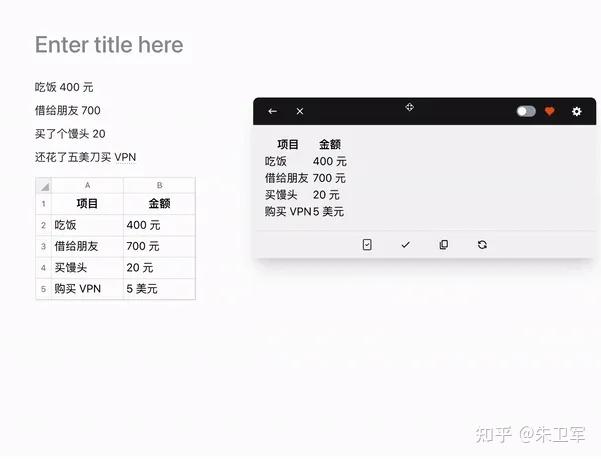一、模型构造
1、继承Module类来构造模型来构造模型
class MLP(nn.Module):
# 声明带有模型参数的层,这里声明了两个全连接层
def __init__(self, **kwargs):
# 调用MLP父类Block的构造函数来进行必要的初始化。这样在构造实例时还可以指定其他函数
# 参数,如“模型参数的访问、初始化和共享”一节将介绍的模型参数params
super(MLP, self).__init__(**kwargs)
self.hidden = nn.Linear(784, 256) # 隐藏层
self.act = nn.ReLU()
self.output = nn.Linear(256, 10) # 输出层
# 定义模型的前向计算,即如何根据输入x计算返回所需要的模型输出
def forward(self, x):
a = self.act(self.hidden(x))
return self.output(a)2、Sequential类继承自Block类
Sequential类它提供add函数来逐一添加串联的Module子类实例,而模型的前向计算就是将这些实例按添加的顺序逐一计算。
net = MySequential(
nn.Linear(784, 256),
nn.ReLU(),
nn.Linear(256, 10),
)
print(net)
net(X)3、ModuleList类
①定义
ModuleList 是 PyTorch 中的一种容器类,位于 torch.nn 模块下,专门用于存储多个子模块(即网络层)。
net = nn.ModuleList([nn.Linear(784, 256), nn.ReLU()])
net.append(nn.Linear(256, 10)) # # 类似List的append操作
print(net[-1]) # 类似List的索引访问
print(net)②ModuleList 和 Python 普通列表的区别
- 注册模块:
ModuleList中的所有子模块都会被注册为模型的一部分。PyTorch 会自动识别并将它们的参数纳入模型的训练和保存中。而普通的 Python 列表并不会注册其中的模块。 - 参数追踪:使用
ModuleList后,model.parameters()可以追踪到列表中的所有模块参数。如果使用普通列表,模型中的这些层的参数将不会被自动管理。
(1)ModuleList
class Module_ModuleList(nn.Module):
def __init__(self):
super(Module_ModuleList, self).__init__()
self.linears = nn.ModuleList([nn.Linear(10, 10)])(2)Python列表
class Module_List(nn.Module):
def __init__(self):
super(Module_List, self).__init__()
self.linears = [nn.Linear(10, 10)]由结果可以看出,使用了nn.ModuleList([nn.Linear(10, 10)]),自动注册了模块并进行参数追踪,而使用列表 [nn.Linear(10, 10)]定义的参数将不会被自动管理。

4、ModuleDict类
ModuleDict 是 PyTorch 中 torch.nn 模块下的一个容器类,专门用于存储多个子模块,并以字典的形式组织这些子模块。与 Python 的普通字典不同,ModuleDict 中的子模块会被自动注册为模型的一部分,这使得 PyTorch 可以自动追踪、保存和加载这些模块及其参数。
net = nn.ModuleDict({
'linear': nn.Linear(784, 256),
'act': nn.ReLU(),
})
net['output'] = nn.Linear(256, 10) # 添加
print(net['linear']) # 访问二、模型参数的访问初始化和共享
init模块,它包含了多种模型初始化方法。
1、访问模型参数
①net.named_parameters()
net.named_parameters() : PyTorch 中的一个方法,用于返回模型中所有可训练参数的名称和参数本身(权重和偏置)。
print(type(net.named_parameters()))
for name, param in net.named_parameters():
print(name, param.size())
② nn.Parameter
nn.Parameter:用于定义可以被优化(即可以通过梯度下降等算法进行训练)的参数。当你创建一个 nn.Parameter 对象时,它会自动注册到模型的参数列表中,这意味着它将被包含在模型的参数优化过程中。
class MyModel(nn.Module):
def __init__(self, **kwargs):
super(MyModel, self).__init__(**kwargs)
self.weight1 = nn.Parameter(torch.rand(20, 20))
self.weight2 = torch.rand(20, 20)
def forward(self, x):
pass
初始化权重的梯度是None,训练过程中回代才改变。
③参数的数值和梯度访问
param.data和param.grad访问和修改相关属性。
for name, param in net.named_parameters():
if 'weight' in name:
init.normal_(param, mean=0, std=0.01)
print(name, param.data)
print(name, param.grad)2、初始化模型参数
①使用init中的方法初始化
下面代码分别是正态分布初始化和常数初始化。
init.normal_(param, mean=0, std=0.01)
init.constant_(param, val=0)②自定义初始化
参数初始化时使用with torch.no_grad()来暂时禁用梯度计算,这对于初始化权重是有用的,因为我们不希望在初始化时计算梯度。
def init_weight_(tensor):
with torch.no_grad():
tensor.uniform_(-10, 10)
tensor *= (tensor.abs() >= 5).float()3、共享模型参数
当不同层指向的是同一个实例时,它们共享同样的权重。如果你初始化或更新其中一个层的参数,实际上这几个层都会受到映像。
linear = nn.Linear(1, 1, bias=False)
net = nn.Sequential(linear, linear)
print(net)
for name, param in net.named_parameters():
init.constant_(param, val=3)
print(name, param.data)
三、自定义层
1、不含模型参数的自定义层
class CenteredLayer(nn.Module):
def __init__(self, **kwargs):
super(CenteredLayer, self).__init__(**kwargs)
def forward(self, x):
return x - x.mean()
layer = CenteredLayer()
layer(torch.tensor([1, 2, 3, 4, 5], dtype=torch.float))2、含模型参数的自定义层
class MyListDense(nn.Module):
def __init__(self):
super(MyListDense, self).__init__()
self.params = nn.ParameterList([nn.Parameter(torch.randn(4, 4)) for i in range(3)])
self.params.append(nn.Parameter(torch.randn(4, 1)))
def forward(self, x):
for i in range(len(self.params)):
x = torch.mm(x, self.params[i])
return x
net = MyListDense()
print(net)四、读取和存储
1、读写Tensor
torch.save():将张量存到指定文件中。
torch.load():载入指定文件中的张量。
y = torch.zeros(4)
torch.save([x, y], 'xy.pt')
xy_list = torch.load('xy.pt')
xy_list2、读写模型
state_dict()方法:
- 保存模型的参数:通过
state_dict(),你可以将模型的参数提取出来并保存为一个字典,以便稍后加载或分享。 - 加载模型的参数:可以通过
load_state_dict()方法将保存的参数字典加载到模型中。 - 检查模型的当前参数状态:
state_dict()方便调试时检查模型的权重和偏置。
class MLP(nn.Module):
def __init__(self):
super(MLP, self).__init__()
self.hidden = nn.Linear(3, 2)
self.act = nn.ReLU()
self.output = nn.Linear(2, 1)
def forward(self, x):
a = self.act(self.hidden(x))
return self.output(a)
net = MLP()
net.state_dict()
PATH = "./net.pt"
torch.save(net.state_dict(), PATH)
net2 = MLP()
net2.load_state_dict(torch.load(PATH))
Y2 = net2(X)
Y2 == Y






![[数据集][目标检测]脊椎检测数据集VOC+YOLO格式1137张1类别](https://i-blog.csdnimg.cn/direct/f2e18bc86dfa4fc0aca921bb2be848af.png)











